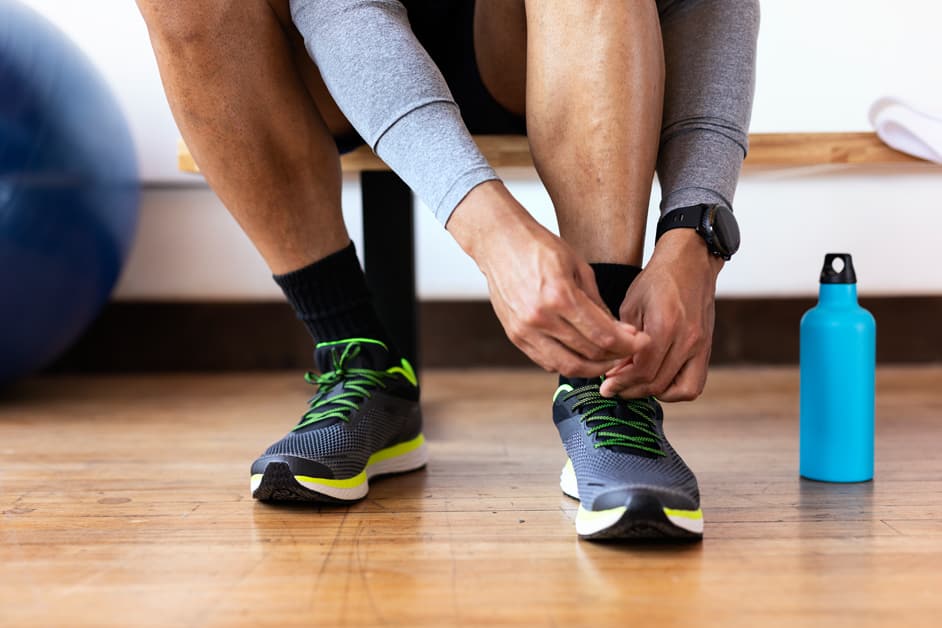Introduction
Knee pain? It’s common amongst adults with sedentary lifestyles, and there are treatments to help. Meds, PT, even injections. But, there’s a remedy that’s overlooked – shoes! The right pair can reduce your risk of pain, and if you already have it, they can help manage it. Let’s explore how shoes can help walk you to knee pain relief.
Advantages of Walking
Walking is a great form of exercise. It’s cheap, easy to do, and you don’t need any special equipment. It can burn calories, and help lower your chances of getting high blood pressure, diabetes, heart attack, and stroke.
Plus, walking may even help with knee pain. It can lessen discomfort caused by existing knee issues. Also, wear the right shoes! They should help spread your weight evenly, cushion your step, and give you good arch support. That will make your walk more comfortable and secure.
Causes of Knee Pain
Knee pain can have many sources: osteoarthritis, overuse injuries, or bad mechanics. To know which type of shoes are best for walking and reducing knee pain, we need to look at the causes. By understanding the reasons behind the pain, you’ll be able to pick the right shoes. This will help ease discomfort, improve movement, and avoid knee injuries.
Excessive Weight
Excess weight is a major cause of knee pain. It adds pressure to joints and increases wear and tear. This can lead to knee osteoarthritis, especially in older adults. Those who are overweight or obese should work to reduce their body weight. This reduces the risk of developing knee pain-related issues like ligament tears and tendonitis.
Weight-bearing exercise which strengthens muscles around the knee joints is helpful to keep the joints healthy. Sustained weight management further reduces the risk of knee pain.
Poor Posture
Poor posture can put an excessive amount of pressure on your knees. This can lead to strain and knee pain. To help distribute weight evenly, stand with feet straight and back straight. Don’t lean your upper body forward or toward one side. Keeping a healthy weight also relieves strain on the knee joint.
Poor posture may cause misalignment in gait – the way you walk or run. This can result in joint trauma. To maintain correct posture when walking and running, regularly stretch your leg muscles. It doesn’t matter what type of shoes you wear.
Weak Muscles
Knee pain is oftentimes caused by weak muscles. When the muscles around the knee joint, like the quadriceps, hamstrings, gluteals and calf muscles, aren’t strong enough for the activity level, it adds stress to the knees. This leads to either sharp or dull pain and can worsen during activity.
It’s vital to build strength in the knee muscles in order to stop injuries and lower the risk of flare-ups when running or playing sports. Squats, lunges and step ups are exercises that can be done to strengthen the knee muscles.
Side-planks and planks can also help condition the muscles in the torso, hips, glutes, and calves that provide additional support when engaging in intense physical activities. Stretching the hip flexors can also reduce pressure on the knees as it limits their movement during strenuous activities. Taking breaks between workout sessions will give your body time to heal and recover, so symptoms of knee pain don’t worsen.
The Right Shoes for Knee Pain Relief
Knee pain relief? Get the right shoes! The perfect pair will give your knees cushioning and support. Here, we’ll show you features of the best shoes for knee pain. So you can find the ones for you:
Cushioned Shoes
Knee pain? Wear the right shoes! Cushioned shoes give support, shock absorption and reduce strain. Especially important on hard surfaces like concrete, asphalt, or cinder blocks. Look for extra cushioning in the heel and arch area. A cushioned sole absorbs impact and stops slipping. Plus, it stops feet from becoming tired.
Look for shoes with the following features:
- Arch support
- A deep heel cup
- A flexible forefoot
- Breathable leather upper
All these features will bring relief to your joints and boost performance. Evaluate different models of cushioned shoes, and find the right one!
Arch Support
Arch support is key when picking shoes to help with knee pain. It keeps your posture and knee alignment in check. Shoes with arch support reduce stress on your knees. Motion control shoes are best for flat feet. Extra cushioning is good for those with high arches.
When selecting shoes, look for curved lasts, reinforced heels, wide toe boxes, and cushioning in heel and midsole areas. For those who are always on their feet, choose lightweight shoes with breathable materials like mesh or leather uppers. They will provide good support and keep feet dry.
Stability Shoes
Stability shoes are great for those with knee pain. They provide balance, cushioning and extra shock absorbency. Look for arch-supporting straps and laces to adjust the fit. Thick materials offer more stability and reduce movement. Avoid thin mesh fabrics – they won’t provide enough support.
For long hours of activity, opt for lightweight cushioning with breathable uppers for better thermal regulation.
Tips to Choose the Right Shoes
Want knee pain relief? Get the right pair of shoes for walking! It’ll help keep your body aligned and give you arch support, shock absorption, cushioning, and stability. We’ve got tips to help you choose the perfect pair. Let’s go!
Try Them On
Before you buy shoes, try them on in the store. Wear the same socks you plan to wear with them. Shoes that are too big or too small can cause discomfort and blistering. The shoe should feel comfortable when you slip it on. The heel collar should fit correctly. The sole should flex at the ball of your foot when you bend it slightly. There should be between 1/2″ and 3/4″ between your longest toe and the front of the shoe. Feet swell when walking – so get measured while standing. Consider going up half a size or even one full size to ensure enough room for both feet. Some manufacturers have different sizing conventions.
Bring orthotics if needed. Many companies offer slots for custom arch supports. Pay attention before buying – poorly fitting shoes can do more harm than good when it comes to joint pains.
Consider Your Gait and Foot Type
When selecting walking shoes, think about your gait & foot type. People with flat or weak arches may be more likely to get knee pain if they don’t get enough support. Also, observe how you walk – heel-toe or outside of your heel? Pronation is normal, but too much or too little can cause knee pain.
Go to a store that specializes in finding the right shoe for a perfect fit & support. Use the specialized tools to figure out how your foot works & get the right shoe with cushioning & support. Look for shock-absorbing soles that evenly distribute pressure – this avoids overload in any area that could lead to knee pain.
Read Reviews
Reading reviews can help you choose the right shoes. They give valuable info about comfort, quality, and fit. Look for customer reviews on online shoe retailers. Also, check independent sites like ConsumerReports.org and online forums.
Take reviews with a grain of salt. A reviewer’s opinion may not apply to you. Filter bias before deciding if the shoes are right for you. Consider what other reviewers say. Many positive reviews compared to negative ones are good signs.
Conclusion
Knee pain relief? Essential! Shoes make a big difference. The right ones, for your needs? Comfort and less risk of injury? Yes! Here we looked at the best shoe options for relieving knee pain.
Benefits of Wearing the Right Shoes
Wearing the right shoes can bring relief from knee pain. They cushion your body weight and help you walk with stability. This is especially important for people with joint problems or a high body weight.
The shoes should fit well, without being too tight. They must be light and flexible for comfort. They must give extra support to the heel, arch and ankle for stability. They must have an anti-slip sole too.
These shoes can offer more benefits than just knee pain relief. They absorb shock which helps to protect the joints and muscles. They can also act as a support if there are any existing motion control issues causing pain or discomfort.
Frequently Asked Questions
Q: What type of shoes are best for knee pain relief?
A: A good pair of shoes with a cushioned sole and supportive arch can help reduce knee pain. Shoes with extra cushioning around the heel and arch are also good options. Additionally, shoes that are lightweight and provide motion control are beneficial for reducing knee pain.
Q: How often should I replace my shoes?
A: Depending on the type of activity you are doing, it is recommended that you replace your shoes every 300-500 miles. If you are using your shoes for walking and/or running, it is recommended that you replace them every 6 months. Additionally, if you notice any signs of wear or discomfort, it is best to replace them.
Q: What other strategies can I use to reduce knee pain?
A: In addition to wearing proper shoes, other strategies that can help reduce knee pain include weight management, stretching, and strengthening exercises. It is also important to pay attention to your posture and body mechanics when engaging in activities that may cause knee pain. Additionally, wearing a knee brace and/or using over-the-counter anti-inflammatory medications may also help.





